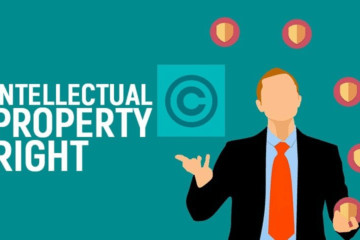
This article is written by Apurba Das, a law graduate of Madhusudhan Law University, an intern under Legal Vidhiya
Abstract:
Intellectual property has a binary nature, i.e., it has both public and transnational confines. For illustration, patents are governed by public laws and affiliated country regulations, while transnational conventions on patents cover minimal rights and give some measures for enforcement of rights by contracted countries. Strong protection for intellectual property rights (IPR) worldwide is really important for the unborn profitable growth and development of all countries. Because they include common rules and regulations, transnational IPR covenants, in turn, are essential to achieving strong intellectual property protection that promotes global profitable expansion and the growth of new technologies. Intellectual Property are those rights that arises when the created product is intellectual work i.e., when the work is in the human mind. According to the World Intellectual Property Organization (WIPO) intellectual property refers to creations of the mind: inventions, literary, and artistic works; and symbols, names and images used in commerce.
Keywords: Intellectual Property Rights, WIPO, Conventions, Treaties, Minimal Rights.
Introduction
Intellectual Property is an intellectual work that is created by intellectual mortal brain. For example: invention, music, art and etc. When a person is given rights over their original works of art that is called Intellectual Property Right. This Act provide the inventors or author or writer a time-limited special right to utilize his/her mind’s creation. Example are music, writing, innovations, etc. It is an intangible asset possessed by the human mind.
Intellectual Property is divided into two categories:
- Industrial property:
This type of industry deals with patents for inventions, trademarks registration, industrial designs and geographical indications, layout designs for semiconductor integrated circuits, new plant varieties protection.
- Literary property:
These property deals with the text, information and entertainment fields which relates to literary works (such as novels, poems, etc.), films, music, artistic works (like drawing, painting, photographs and sculptures), computer programs and architectural design.
Intellectual Property covers a lot of areas in law which needs to protected as these are intangible in nature, some examples like:
- Copyright Law protects the copyright of authors, musicians, etc.,
- Patent Law protects the inventions of inventors, &
- Trademark Law protects the trademark of certain products.
Not only in India, but in the entire world the concept of “copyright” or “related rights” sometimes also known as “neighboring rights” have assumed significance in the context of contemporary scientific, economic, social, political & legal environment. It can be seen that technological innovation like computer, audio recording, cable television, satellite broadcasting and internet have challenged copyright law time to time to amend their law according to modern change.
In this digital environment the copyright law tries to strike a balance between the right to protect the owner’s right and also deal with the subject of public interest. With the entry of a new world full of technology, copyright law has covered a long journey, earlier the law used to protect literary or artistic work but now it is expanding its protection.
HISTORICAL DEVELOPMENT IN COPYRIGHT IN INDIA
During the East India Company’s regime the copyright statutory law was enacted as Indian Copyright Act of 1847, which was technically the applicability of English copyright law to India[1]. Repealing the earlier statute by The Copyright Act, 1911 and made applicable to all the British colonies including India. Further in 1914 some of the provision was modified and some provisions are added to Copyright Act, 1911 and termed it as Indian Copyright Act and made applicable in India. This Indian Copyright Act, 1914 remained applicable in India until it was replaced by the Copyright Act, 1957[2] by the parliament of India.
Copyright
Copyright is essentially the right to copy. If a person is interested on a particular art, then he can only replicate the work if the owner of the art gives him the permission to do so. The nature of copyright is that it is an incorporeal property. Since the idea and thoughts of an individual is in his mind and these properties are incorporeal property, they cannot be protected. However, once those ideas and thoughts are brought down into material form then it is worthy to be protected by other individuals. And for the protection of such art such as music, writing copyright law is necessary and it can be used to protect the intangible asset. Copyright Law is a legal term used to describe the right that the creator gets over their creative work from unauthorized duplication. This law is simple law that suggest the owner of the work has the sole ownership of the work and he has the right to describe what happens with his work next. Copyright has been defined in Section 14 of Copyright Act, 1957, it states that “copyright” means the exclusive right subject to the provision of this Act, to do or authorize the doing of any of the following act in respect of a work or any substantial part thereof, namely-
- in the case of literary, dramatic or musical works,
- in case of a computer programme,
- in case of artistic work,
- in case of cinematography film, &
- in case of sound recordings.
- Berne Convention on Copyright (Protection of literary work and artistic work)
Berne Convention for the protection of erudite and cultural work was espoused in 1886[3]. The convention is one among those first conventions which have articulated for the protection of creative workshop through brand. The convention aims to cover different types of erudite and cultural workshop through conferment of brand. The expression “erudite and cultural work[4]” shall include every form of expression irrespective of the mode including book, phamplates, lectures, dramatic workshop, musical, cinematographic workshop, dumb shows, drawing, painting, form, armature, drawing, lithography, photography, charts, plans, sketches, three-dimensional workshop, geomorphology etc., The convention introduces brand as form of right with pack of options to exploit the same. The protection isn’t only offered for the original work but as well the right to exploit the defended work in any manner including adaption, restatement, conversion etc., It talks about the criteria and eligibility for protection. It also talks about the possible restrictions on the protection and the nature and extent of rights conferred on the brand possessors. There are series of vittles in the convention determining the minimal protections to be granted, as well as special vittles are made available to developing countries which want to make use of them. Under the convention, protection is offered to those erudite workshops which are fixed in some material form. There’s a mentioning about moral rights and also rights of broadcasting under the convention. The convention forms the introductory norm of transnational law on brand protection. The Berne Convention requires its signatories to fete the brand of workshop of authors from other signatory countries (known as members of the Berne Union) in the same way as it recognizes the brand of its own citizens. For illustration, French brand law applies to anything published or performed in France, anyhow of where it was firstly created. In addition to establishing a system of equal treatment brand amongst signatories, the agreement also needed member countries to give strong minimal norms for brand law. Brand under the Berne Convention must be automatic; it’s banned to bear formal enrollment. The Berne Convention states that all workshop except photographic and cinematographic shall be copyrighted for at least 50 times after the author’s death, but parties are free to give longer terms, as the European Union did with the 1993 Directive on harmonizing the term of brand protection in the Union countries. For photography, the Berne Convention sets a minimal term of 25 times from the time the snap was created, and for cinematography the minimum is 50 times after first caching, or 50 times after creation if it hasn’t been shown within 50 times after the creation. Countries under the aged variations of the convention may choose to give their own protection terms, and certain types of workshops (similar as phono records and stir filmland) may be handed shorter terms. Although the Berne Convention countries that the brand law of the country where brand is claimed shall be applied, Article 7.8 states that” unless the legislation of that country else provides, the term shall not exceed the term fixed in the country of origin of the work”, i.e., an author is typically not entitled a longer brand abroad than at home, indeed if the laws abroad give a longer term. This is generally known as “the rule of the shorter term”. Still, not all countries have accepted this rule.
- Universal Copyright Convention, 1952
Universal Copyright Convention firstly espoused in the time 1952 at Geneva and latterly on protocols to the Convention are done at Paris July 24, 1971. This Convention is intended to grease a wider dispersion of workshop of the mortal mind and increase transnational understanding. The preamble of this Convention states that the Convention it was concluded on the constricting states being induced that a system of brand protection applicable to all nations of the world and expressed in a universal convention, fresh to, and without injuring transnational systems formerly in force, will ensure respect for the rights of the individual and encourage the development of literature, lores and trades. This convention provides for the effective protection in each of the constricting countries of the rights of authors and other brand possessors in erudite, scientific and cultural workshop, including jottings, musical, dramatic, cinematographic workshop, oils drawings and form; public treatment of citizens of other constricting countries in respect of their work published in their own countries and unpublished work; term of protection. The convention which was espoused principally to cover those nations which have not espoused Berne convention has lower significance moment as utmost the nations have espoused the Berne convention.
- Rome Convention
After the Berne convention, it’s the Rome convention which gains lot of significance in the shaft of brand law. This is a transnational convention espoused in 1961, for the protection of players, directors of phonograms and broadcasting associations. The convention secures protection for performances of players, directors of phonograms and broadcasts of broadcasting associations. It talks about the minimal protection to be offered to the players, phonograms and broadcasting associations[5]. There’s a discussion on the extent of rights honoured and defended under the convention. The expressions,” pantomime,”” phonogram”,” broadcasting,” ” Patron of phonogram”,” publication,”” reduplication” have been well defined under the convention. The relation between the players and the broadcasting association has also been dealt in with by the convention. This convention has been followed by couple of other conventions on the same issue with rearmost and advanced approaches needed by the social, artistic, technological and profitable changes in the contemporary world.
- Convention for the protection of producers of phonograms
It’s a yet another convention simply devoted for the protection and creation of directors of phonograms and the workshop related thereto. 2 The convention protects certain ” affiliated rights” which are the rights of the players and directors of phonograms. The convention espoused in 1971, aims to enjoin unauthorized use and duplication of workshop of phonograms. It intends to cover the rights of the authors, directors, players and phonograms through prohibition of unauthorized use and duplication of phonograms. The convention recognizes the sweats of United Nations Educational, Scientific, Cultural Associations and World Intellectual Property Organization for the creation and protection of rights of phonograms and players. In the background of birth of internet and emergence of online terrain there set up new subject matters of brand which aren’t having typical physical actuality. These subject matters maybe seek special consideration over and above the being and established rules and practices under the brand law. Feting the need in this regard, transnational society espoused two new transnational covenants. The WIPO which has done pioneering work in the field of intellectual property law and brand work took inauguration in this regard. Let us go into some details of these new covenants on brand law.
- The WIPO Internet Treaties:
The WIPO Performances and Phonograms Treaty (WPPT), 1966 and The WIPO Copyright Treaty (WCT), 1966
The WIPO Performances and Phonograms Treaty (WPPT), 1996 and the WIPO Copyright Treaty (WCT), 1996 also known as the Internet covenants, make it an offence to circumvent technological measures employed by authors to cover their workshop. The WIPO Copyright Treaty (WCT), 1996 is a special agreement that constricting parties of the Berne Convention may enter into without prejudice to the Berne Convention. WCT, in addition to stipulating that constricting parties apply mutatis mutandis the vittles of the Berne Convention, in respect of the protection handed by WCT, requires that the following shall be defended by brand in the countries of the constricting parties.
- Computer programs, whatever may be the mode or form of their expression, and
- Compendiums of data or other material (database), in any form, which by reason of the selection or arrangement of their contents constitute intellectual creations.
Article 11 and 12 of the WCT are important advances made towards further effective brand protection. They put the obligation on the constricting parties to give legal remedies against the endurance of technological measure used by authors in connection with the exercise of their rights and against the junking or altering of information, similar as certain data that identify the work or their authors, necessary for the operation of their rights.
Article 18 and 19 of WPPT deal with scores concerning technological measures and rights operation information in relation to the rights of players and directors of phonograms.
These two covenants strengthen the base towards:
- The prohibition of contraventions and attempts at violation by circumventing technological measures controlling access to a copyrighted work, and
- The preservation of the integrity of brand operation information.
Brand operation information covers the title of work, the name of the author, the name and relating information about the brand proprietor, information set out in the notice of brand, terms and conditions for use of the work etc. Infringers, to conceal violation give brand operation information that’s false.
Conformity of Indian law, the Copyright Act, 1957 to the WIPO covenants (Internet covenants) Insertion of new sections. The government of India lately has published a press note stating the press blessing on the accession to the WIPO Copyright Treaty, 1996 and WIPO Performance and Phonograms Treaty, 1996. India has amended the Copyright Act, 1957 to borrow these covenants through preface of two sections viz, section 65A and 65B by the 2012 Amendment Act.
- The TRIPS agreement
The passages agreement happed to regularize the law and policy material to brand at transnational position. The agreement intends to recognize and put together the other being agreements and conventions on brand law including the Berne convention, Rome Convention and the WIPO covenants on brand law. The agreement brought the important demanded uniformity in terms of law of brand across the transnational society. The member countries of the agreement are supposed to maintain the norms set not only in the passages agreement but as well in the other recognised conventions on brand. The agreement authorizations the member states insure effective protection to the subject matter of brand through necessary means and measures. passages bear member countries to give strong protection for imprints. For illustration, under TRIPS:
- Brand terms must extend to 50 years after the death of the author, although flicks and photos are only needed to have fixed 50 and to be at least 25 years terms, respectively[6].
- Brand must be granted automatically, and not grounded upon any” formality”, similar as enrollments or systems of renewal.
- Computer programs must be regarded as” erudite workshop” under brand law and admit the same terms of protection.
- National exceptions to brand (similar as” fair use” in the United States) are constrained by the Berne three- step test.
- Exceptions to the exclusive rights must be limited, handed that a normal exploitation of the work (Article 13) and normal exploitation of the patent (Art 30) is not in conflict.
- In each state, brand laws may not offer any benefits to original citizens which are not available to citizens of other passages signatories by the principles of public treatment (with certain limited exceptions, Article 3 and 5).
Numerous of the passages or TRIPS vittles on brand were imported from the Berne Convention for the Protection of Literary and Cultural workshop. These transnational conventions have handed the needed means and measures for the guidance of the domestic nations in architecture and formulating public brand laws.
Recent Developments
In recent times, accessions to the Berne Convention have accelerated, due to the growing mindfulness that brand protection is a pivotal part of the new global trading system; transnational trade in goods and services defended by intellectual property rights is a booming, worldwide business, and both developed and developing countries have honored that it’s in their interest to give strong protection of intellectual property rights in order to share in the benefits of similar trade. The Agreement on the Trade Related Aspects of Intellectual Property Rights (passages Agreement), which incorporates the substantial vittles of the Paris Act of the Berne Convention, is clear evidence of the significance now attached to intellectual property protection by numerous countries of the world.
Conclusion
The expression of an idea may be through any medium, a book, a handwritten handwriting, a picture, a delineation, a snap, a speech or any performance, which may be a visual pr audial donation made live by one or further players or a cinematograph film or a video film. There are several factors to the generality of brand in a work. First, it’s the work, which should be covered by one or further of the specific classes recognized by the 1957 Act, analogous as erudite work, musical work, dramatic work etc. also comes the author or the maker of the work or bone who performs the work and originality in expression of ideas. Of these originality is the most important qualification for claiming brand protection. Originality, for this purpose, only means that the work is that of the author himself i.e., is his or her own and not copied from the work of another.
[1] Kala Thairani, HOW COPYRIGHT WORKS IN PRACTICE (Bombay, 1996), p.2.
[2] The Copyright Act, 1957 came into force on 21-01-1958, vide Notification No. SRO 269, Gazette of India, Ext. Part II, Section 3(ii), p. 167.
[3] The Convention was subjected to regular amendments and the latest amendment being the one made in 1979 at Paris.
[4] Article 2 of the Berne Convention for the protection of literary and artistic works.
[5] International Legal Instruments on Intellectual Property Rights, National Law School of India University, Bangalore, 1998.
[6] Article 7(2), (4) of the TRIPS agreement.




0 Comments